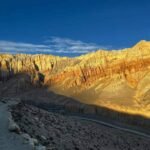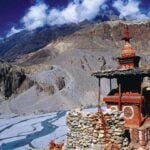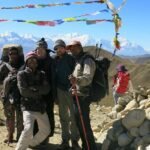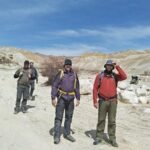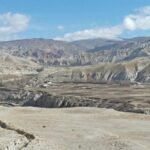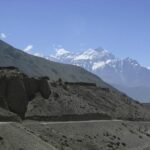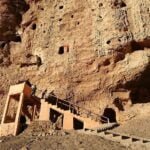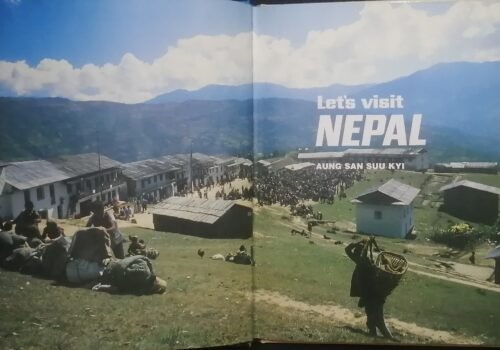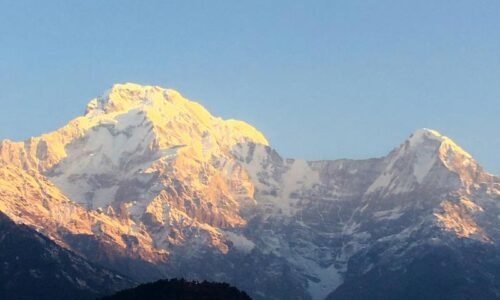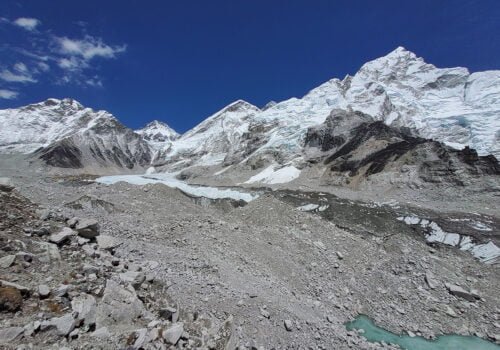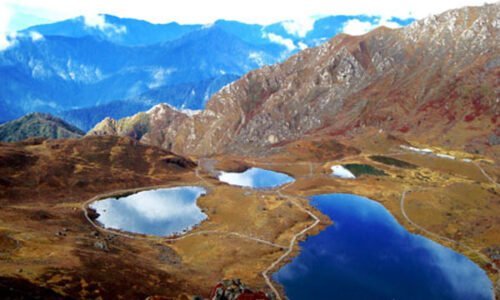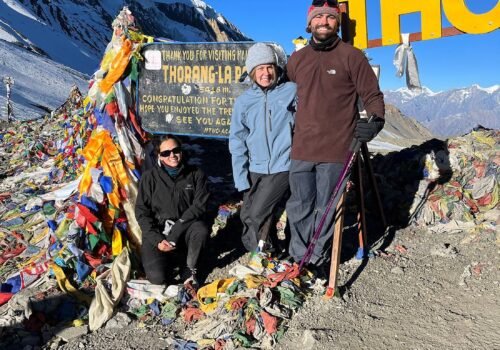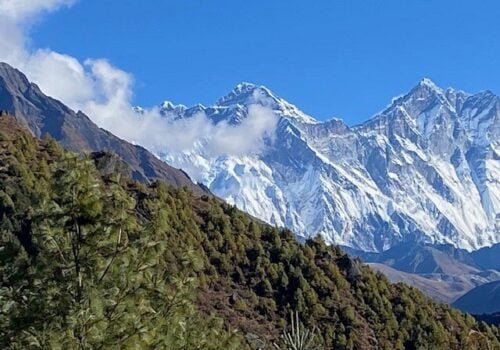Complete Guide to the Upper Mustang Trek
17 Jun 2025 6 min to read
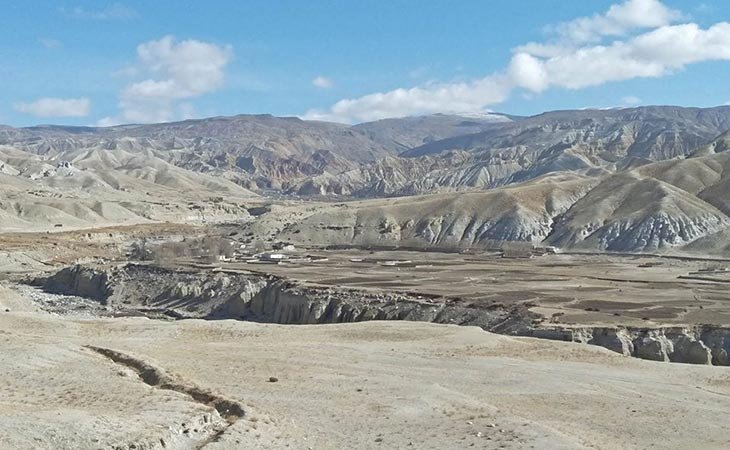
The Upper Mustang Trek takes you through a remote region of Nepal known as Mustang Bhot, closely tied to Tibetan culture due to its location beyond the Himalayas in a rain-shadow area. This desert-like landscape features red, yellow, and brown earth, mysterious caves, and eroded sandstone formations, resembling the Trans-Himalayan plateau.
The trek offers a rich mix of cultural and natural wonders, from ancient monasteries and traditional villages to the world’s deepest gorge carved by the Kaligandaki River. Traversing high passes, alpine valleys, and barren mountains, the journey leads to Lo-Manthang, the cultural heart of Upper Mustang, with stunning views of Nilgiri, Annapurna, and Dhaulagiri throughout. Here is a complete guide to the Upper Mustang trek to make your journey effective.
Why Choose the Upper Mustang Trek?
Hidden Kingdom of Lo Manthang: A remote walled city in Upper Mustang, preserving centuries-old Tibetan culture and royal heritage.
Deepest Kaligandaki Gorge: The world’s deepest gorge, carved between Dhaulagiri and Annapurna massifs.
Stunning dry landscapes: Unique desert-like terrain with dramatic cliffs and eroded canyons, unlike typical Himalayan scenery.
Traverse through beautiful villages: Scenic villages such as Tsarang, Marpha, Kagbeni known for traditional architecture, apple orchards, and Tibetan influence.
Ancient monasteries and century-old caves: Spiritual and historical sites carved into cliffs, reflecting ancient Buddhist traditions.
Himalayan lifestyle and local culture: Experience the authentic daily life, hospitality, and customs of the Mustang people.
Panoramic views of snow-capped peaks: Breathtaking vistas of towering Himalayan giants like Annapurna, Dhaulagiri, and Nilgiri.
Key Information at a Glance
Maximum Elevation: 4,320 m (Chogo La Pass)
Physical Grading: Difficult
Best Seasons: Spring (March-May) & Autumn (September-November)
Accommodation: Basic teahouses along the trail
Meals: Full board during the trek (healthy, hygienic meals)
Permits Required: Upper Mustang Restricted Area Permit (RAP), Annapurna Conservation Area Permit (ACAP), and Trekkers Information Management System (TIMS)
Trek Route:
Jomsom – Kagbeni – Samar – Ghami – Tsarang – Lo Manthang – Dhakmar – Syangboche – Chhusang – Jomsom

Day-to-Day Short Overview
Day 01: Kathmandu arrival (1400 m)
Arrive in Kathmandu, get welcomed by the representative, and transfer to the hotel.
Day 02: Drive to Pokhara via tourist bus (822 m)
Adoring the surrounding scenery drive to Pokhara which takes 7-8 hours.
Day 03: Fly to Jomsom (2743 m), trek to Kagbeni (2804 m)
A 30-minute scenic flight to Jomsom and start trek to Kagbeni.
Day 04: Trek to Samar (3600 m)
Follow the Kaligandaki River and walk past Chele to Samar.
Day 05: Trek to Ghami (3510 m)
Adoring Nilgiri, Thorang Peak, Muktinath Himal, Damodar Himal, trek to Ghami.
Day 06: Trek to Tsarang (3560 m)
Admiring the views of Red Cliffs trek to Tsarang.
Day 07: Trek to Lo Manthang (3840 m)
Trek to Lo Manthang and get rewarded with picturesque scenery.
Day 08: Acclimatization Day
Explore Chosser Cave and visit the Gharpu, Niphu, and Nyamdu monasteries.
Day 09: Trek to Dhakmar (3820 m)
Trek to Dhakmar via Chogo La, the highest point of the trek relishing the surrounding beauty.
Day 10: Trek to Syangboche (3800 m)
Pass beautiful villages and scenic passes to Syangboche.
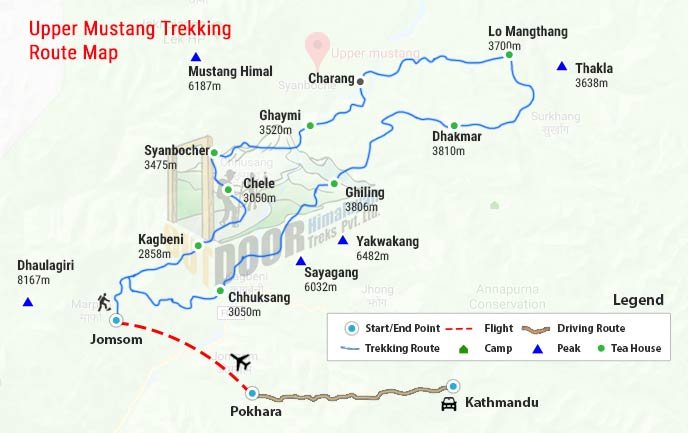
Day 11: Trek to Chhusang (3000 m)
Pass through Bhena La and Samar to arrive at Chhusang.
Day 12: Trek to Jomsom (2743 m)
Trek to Jomsom which has a windy atmosphere.
Day 13: Fly to Pokhara (822 m)
Take a short scenic flight to Pokhara and complimentary sightseeing in the afternoon.
Day 14: Drive to Kathmandu (1400 m)
Drive to Kathmandu after completing the Jomsom Muktinath trek.
Day 15: International departure
Transfer to the airport for an international departure.
Suggested: Upper Mustang Trek 10 Days

Accommodation and Meals
Basic teahouses or lodges with comfortable twin-sharing rooms are accommodation types. They offer simple facilities and washrooms are mostly outside. The meal options include traditional Nepali dishes with limited Indian and continental cuisines which are healthy and hygienic. For drinking, mineral water bottles or boiled water are available.
Preparation and Fitness
The Upper Mustang trek takes you to the maximum elevation of 4,320 m, which makes it a difficult trek. Walking daily for long hours on rough trails is physically demanding. The trekkers must be both physically and mentally fit, hence, we advise participating in exercises. Make sure to participate in hiking and endurance exercises before starting the trek. We recommend strictly following the guidelines, adhering to acclimatization schedules, and staying hydrated during the trek.
Gear and Packing List
Warm clothing: Insulating layers, down jackets, trekking pants, thermals
Trekking boots: Durable, waterproof boots
Sleeping bag: Suitable for temperatures as low as (-5°C)
Accessories: Sunglasses, sunscreen, hats, trekking poles, headlamps, and a water purification system
Permits and Fees
The Upper Mustang trek requires three compulsory permits.
Upper Mustang Restricted Area Permit (RAP)
USD 500 per person (10 days) + extra USD 50 per person per day (beyond 10 days)
Annapurna Conservation Area Permit (ACAP)
Foreigners- NPR 3000/person
SAARC- NPR 1000/person
Trekkers Information Management System (TIMS)
Foreigners- NPR 2000/person
SAARC- NPR 1000/person
Diplomats/Foreign Officials & their families- NPR 500/person
Best Seasons to Trek
The Spring (March to May) and Autumn (September to November) are the best seasons for the Upper Mustang Trek. These seasons offer clear views, comfortable walking trails, stable weather, and moderate temperatures. The blossoming flowers make the trails more charming while trekking in the Spring season. The festive season vibes and clear views make trekking in the Autumn season more pleasant. Monsoon season (Jun-Aug) is also best for the Upper Mustang trek as it is a rain-shadow area and receives less or no rainfall. Winter season treks are unpleasant as the weather is unpredictable and the trails are slippery. However, it is possible to trek with proper planning and preparation, during the Winter (December to February) season for interested trekkers.
Also Read: Upper Mustang Tiji Festival
Conclusion
A Complete Guide to the Upper Mustang Trek provides detailed understandings to plan your trek effectively. The Upper Mustang trek offers unique trekking experience due to its captivating desert-like terrain, ancient monasteries, amazing century-old caves, and preserved authentic culture. An unforgettable experience offering diversity for trekkers seeking newness in Nepal.
Upper Mustang Trek Frequently Asked Questions
How long is the Upper Mustang Trek?
The Upper Mustang trek takes around 12 to 14 days to complete.
Do I need a guide for the Upper Mustang Trek?
A licensed guide is mandatory, and it is highly recommended for the Upper Mustang Trek.
Can I do the Upper Mustang Trek independently?
An Independent Upper Mustang Trek is strictly prohibited.
Are there any age restrictions for the Upper Mustang Trek?
There are no age restrictions, but we still recommend parental guidance for children below 16.
Can I do the Upper Mustang Trek in the monsoon season?
Yes, you can also do the Upper Mustang trek in the monsoon season as this region gets less rainfall.
Are there any alternative routes or side trips on the Upper Mustang Trek?
Some popular side trips on the Upper Mustang Treks to ancient monasteries and caves.
Are there ATM facilities available along the Upper Mustang Trek?
There are ATM facilities at Pokhara on the Upper Mustang Trek route. We highly suggest carrying enough cash (in Nepalese rupees) to cover your expenses throughout the trek.
Are there any communication facilities available during the Upper Mustang Trek?
There are limited communication facilities, such as mobile network coverage and Wi-Fi, along the Upper Mustang Trek.
Can I extend or customize the Upper Mustang Trek?
Yes, the Upper Mustang Trek can be extended or customized, and consult with a trekking agency for it.
